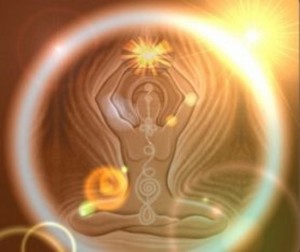Differences in Subtle Degrees of Samadhi
Throughout these sutras Patañjali frequently formulates his approach through the philosophical principles of Saṃkhya-Yoga:
Gross Body. Subtle Body and Spiritual Entity
Man is made of a material structure which comprehends, on one hand, the “gross” body (flesh, bones, hair, ect) and, on the other, the “subtle” body, composed mainly of the mind (citta) and the senses, and of a spiritual entity (puruṣa). This subtle body functions thanks to the spiritual entity and it is through the subtle body that the spiritual entity comes into contact with the external world. In the mind (subtle body) are accumulated the subliminal impressions left behind by all the mental processes, and the karmic residues, or the consequences not yet consummated of the actions which have been accomplished. The mind carries with it, from one exisitence to another, these subliminal impressions and karmic residues. (The Yoga Sutras of Patañjali, on Concentration of Mind, Fernando Tola; Carmen Dragonetti, pg. 66)
Mircea Eliade in his seminal work, Yoga—Immortality and Freedom, asserts that while oftentimes formulated in such a structure, Patañjali’s thought is primarily centered in doing “away with normal consciousness in favor of a qualitatively different consciousness, which can fully comprehend metaphysical truth.” (pg. 36) In this sense Patañjali was highly influenced by Buddhist Thought. In fact, these blogs here over the past year have been voiced in such a manner that the superessential consciousness (amala) of the Tathagatas shines through them—like a golden thread (sutra). This present series is also indicative of this enterprise. The following sutras are indicative of the varying-subtle degrees of Samadhi that are articulated by Saṃkhya-Yoga and ultimately consummated in the very mind-fields of the Tathagatas.
i.19-23 Differences in Subtle Degrees of Samadhi
1.19 gods and sentient-beings who no longer experience gross-body obstructions, but who continue to be influenced and held bound by sensate phenomena, still await rebirth.
Fascinating realization by Patañjali, even though sentient beings and the gods themselves in their sundry realms can experience deep-samādhis, if they don’t adhere to a disciplined Yogic regimen on a continuous basis will continue to be influenced and subjected to both phenomenal and karmic overflows; thus rebirth will continue to occur.
1.20 For some Deep Samādhis is preceded by vigilant Recollective Discipline and fervent faith culminating in tranquil wisdom.
Pretty much Self-explanatory, wherein the yogin/yogini who takes this path seriously and who will continue to faithfully abide in its discipline will eventually escape the endless round of samsaric existence.
1.21 Those who cultivate the former sutra will develop such a “one-pointedness of Recollective Contemplation” that Deep-Samādhis becomes automatic.
Immediate and perpetual success is assured for the one who is resilient in their Recollective Resourcefulness.
1.22 The prize of Amala-consciousness awaits those who ardently devote themselves to this Yogic Enterprise; in so doing there will no longer be any revolving subtle degrees of mild or moderate or extreme mind fluctuations.
This represents the one who has pierced the veil and now experiences—as a grace from the Tathagatas (sharing in their own Amala-consciousness)—annuttara-samyak-sambodhi—or consummation of incomparable enlightenment.
1.23 Surrendering one’s will to the Unborn Spirit guarantees cessation of thought and lasting tranquility.
There are many variables extant in the numerous translations of Patañjali’s text, all stemming from the word [īśvara] which translates as Lord. I prefer Barbara Miller’s “Lord of Yoga”:
“The identification and role of the Lord (īśvara) in yoga varies according to schools of practice and philosophical interpretation. For Patanjali, the Lord is not a creator god who grants grace; rather, he is a representation of the omniscient spirit (puruṣa) as the archetypal yogi (yogeśvara). The definition of īśvara as “a distinct form of the spirit” (puruṣa) (24) identifies it with the primary spiritual principle of Sankhya.” Miller, Barbara Yoga: Discipline of Freedom: The Yoga Sutra Attributed to Patanjali (p. 8). Random House Publishing Group. Kindle Edition.
For Lankavatarians, “Lord of Yoga” translates as the Unborn Spirit—indeed, the true Spiritual Master.

